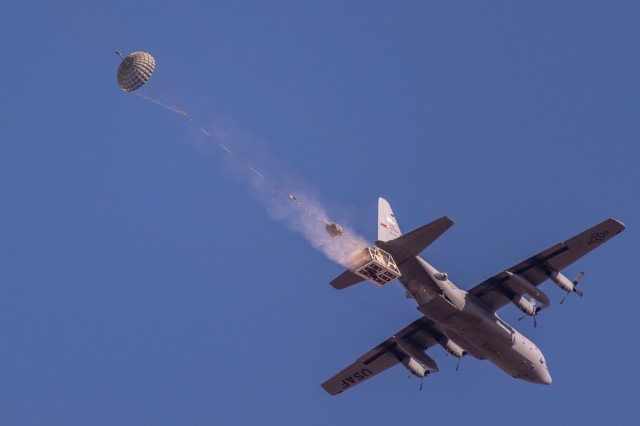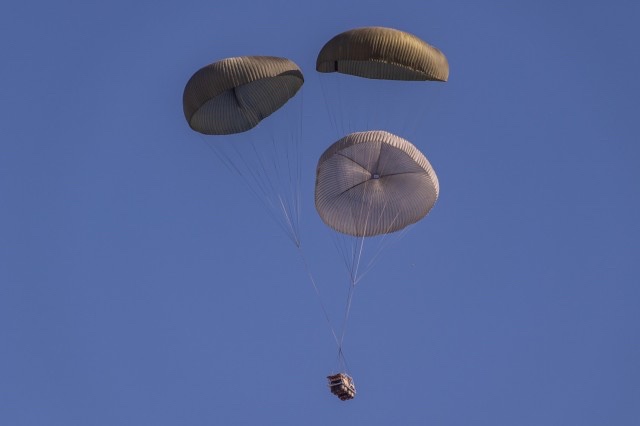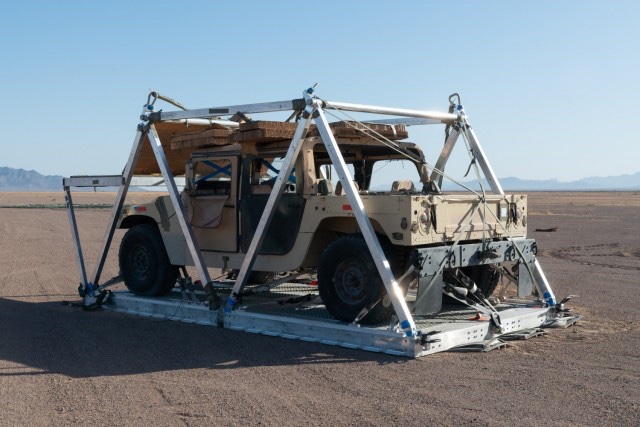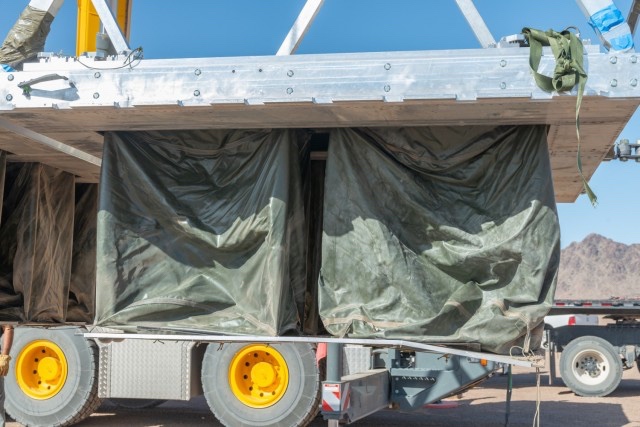
YUMA PROVING GROUND, Ariz. — For U.S. Army Soldiers on the move, getting a vehicle in the field increases their survivability and mobility. Safely airdropping the vehicle and quickly de-rigging it is important to reduce Soldiers’ exposure to threats. As a measure to increase operational readiness, the Army recently tested the ATAX land airdrop system, an off-the shelf prototype.

The Foreign Technology Assessment Support program provided funding that enabled the U.S. Army Combat Capabilities Development Command, or DEVCOM, Soldier Center to test the ATAX system, manufactured by United Kingdom-based IrvinGQ. The system was originally designed for British and NATO standards, which are similar to the U.S. but not identical.

The funding enabled the DEVCOM team to ensure it meets U.S. airdrop and air transportation specifications and to address any issues gathered during the testing. A follow-on Foreign Comparative Testing program, sponsored by the Office of the Secretary of Defense Comparative Technology Office, enabled detailed integration, prototype fabrication and additional airdrop flight testing.

The U.S. Army Yuma Test Center conducted four live airdrop tests between November 2020 and May 2021. The team used ballast weight for the first three airdrop tests and a High-Mobility Multipurpose Wheeled Vehicle for the fourth and last airdrop test, which they drove off the ATAX platform at the conclusion of the test.

“Overall, the project was a success. At the final demonstration, we derigged the HMMWV and drove it off the platform without any issues,” said Sean Wellman, DEVCOM SC engineer and ATAX project lead.
The ATAX airdrop system is modular and consists of eight-foot platforms connected by hinges. It can be adapted to different lengths, typically between 8 and 32 feet, and it is surrounded by a self-contained structure where the parachutes are mounted and attached. The vehicle is loaded onto the ATAX platform with an under-mounted airbag system. In a typical low altitude airdrop, it takes between two to three minutes for the vehicle to drop from a height of 1,500-2,000 feet. Airdrop systems can weigh up to 42,000 pounds including the payload and airdrop equipment.

The ATAX airdrop system has significant advantages over traditional systems because it uses reusable airbags to soften the impact when the vehicle lands. Traditional airdrop systems use multiple layers of stacked paper honeycomb that is three inches thick to soften the landing. The paper honeycomb, which is crushed by the impact, is left in the field and can take up to an hour or more for Soldiers to free the vehicle from the paper honeycomb. One of the goals of the project is to reduce de-rigging time by 75 to 80 percent, which will reduce the amount of time that Soldiers are in the drop zone.
“Airbags minimize or avoid the need for paper honeycomb, saving time during preparation and recovery. The risk of becoming stuck in a stack of honeycomb is eliminated when airbags are used. Basically, when the vehicle is dropped, everything comes off, and the vehicle is ready to execute the mission,” Wellman said.
DEVCOM SC teamed with Product Manager Force Sustainment Systems on the FTAS and FCT project. PM FSS is executing the Rapid Rigging and Derigging Airdrop System Program of Record, which will enable wheeled vehicles to drive on and off the aerial delivery platform, decreasing the amount of time Soldiers are in the drop zone. Funding provided by the FCT program enabled the Army to maintain competition that would otherwise have not been possible. The FCT program provides funding to acquire, test and evaluate mature products from foreign industry that might fill a capability gap or satisfy an urgent need.
DEVCOM SC established a Cooperative Research and Development Agreement with IrvinGQ in 2018, to share information about the ATAX system and other aerial delivery technology. DEVCOM is leveraging the CRADA for other projects that support its mission. According to IrvinGQ, numerous European forces are using the ATAX system.
“Ultimately, the ATAX system was not selected for further development but it was a key enabler for modernization efforts in aerial delivery. The ATAX is still available as a test bed for future science and technology projects, if needed,” said Andrew Meloni, lead of the DEVCOM SC Airdrop Research, Capabilities & Systems team.
By Argie Sarantinos, DEVCOM Public Affairs


As a former Parachute Rigger I love this idea
Honeycomb we use is not only a giant pain when de-rigging but also when rigging the vehicle
So many hours wasted pre cutting cardboard with a saw, gluing the stacks and letting it all dry before you can even think about sitting a vehicle on it
Depending on the mission 2-3 weeks of prep time just on prep work